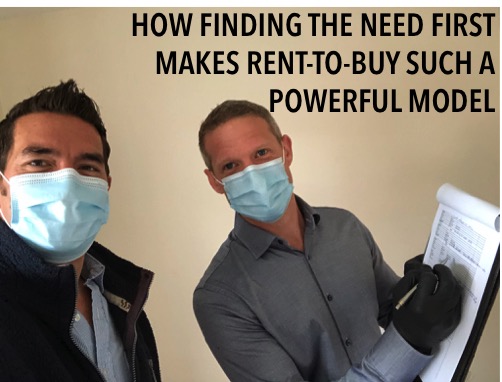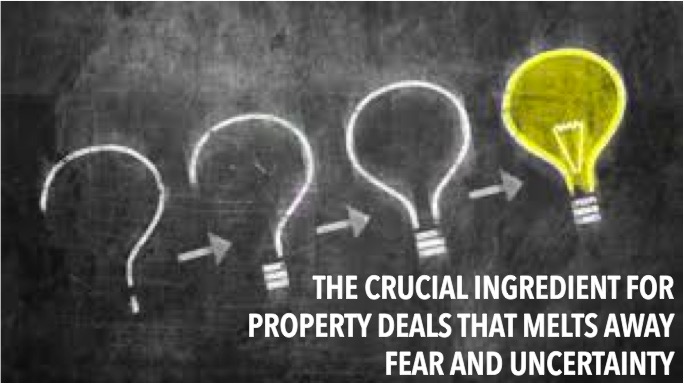It feels logical to do a follow up to the post I wrote a couple of weeks ago titled, “THE CRUCIAL INGREDIENT FOR PROPERTY DEALS THAT MELTS AWAY FEAR AND UNCERTAINTY”.
[If you missed that I’ll put a link at the bottom.]
The core message of that post was to “Stop chasing money and start chasing needs”. I am a firm believer of this philosophy being at the heart of all business, especially in property.
I fondly recall interviewing my friend Abi in sunny Italy last year as part of the practical case studies to feature in my book Predictable Property Profits- I was featuring her because of a lesser known and powerful strategy she was implementing called Rent-To-Buy (RTB). Several years ago I read about the concept of RTB in the pages of Your Property Network but it wasn’t until Abi really started leading from the front with this strategy that I got to fully understand the true power of it. I had left BTL behind years ago, thinking that HMO’s and serviced accommodation were far sexier and better investments for me. In hindsight, ruling out BTLs was wrong thinking, I’m eternally grateful for the BTLs I do have and I believe that long term single let properties should make up at least some of the portfolio for all serious property investors. And so it’s thanks to Abi and this RTB strategy that I’m excited about BTLs again.
So how does this philosophy of ‘chase needs’ apply to the RTB model? Before I dive into that it’s worth briefly explaining what RTB is for anyone who is unfamiliar.
The basic premise with the rent-to-buy model is as follows:
-investor buys a house
-investor finds a tenant buyer to rent the house and buy it at the end of a pre-agreed period for a pre-agreed price
-during the rental term the tenant buyer pays market rent plus a top up contribution towards a deposit to purchase the house
-at the end of the term the tenant buyer purchases the house and the investor cashes out with a flip profit and the net cash flow from the previous rental years (see it as a long term flip with two sources of income ie rent and lump sum at the sale).
So back to starting with the NEED. I know this is a powerful approach because it’s how Chris and I pivoted out of a failing SA business (built on guesswork) and started a new SA business that continues to be successful….because it originated from a strong end user need.
In his book ‘The 7 Habits of Highly Effective People’, the 2nd habit that author Stephen Covey writes about is to START WITH THE END IN MIND. This is exactly what we are talking about here and applying it to property.
So, rather than not knowing where to invest in a house for RTB, and not knowing if someone would definitely take it off your hands, you can melt away all that uncertainty by securing the tenant buyer first. And this is exactly what we’re doing now.
By literally talking about this concept with a number of people, one of those contacts raised their hand in interest, so I pulled the thread and had several follow up conversations to understand what the need was and qualify them as a serious tenant buyer before even looking at any property.
In my book Predictable Property Profits I simplify my philosophy into an easy to remember acronym D-I-C-E which covers 4 key steps to remove guesswork. So here’s how I applied those steps to this situation:
D – Find the DEMAND
As explained above this came about through talking about what I’m doing, listening and asking deeper questions.
I- IDENTIFY the solution
I made up a simple process to essentially take a brief of what property would meet my prospective tenant buyer’s needs. In this case it included a specific area, proximity to the schools, kitchen size and layout and bedroom size for the kids. I pulled up half a dozen examples of property for sale so I could capture real time feedback and reference points for my search brief.
C- COMMITMENT in advance
Having confirmed I understood the brief and having done some desk research to gain some confidence that I could deliver, the next step is to get commitment – in other words a commitment deposit or engagement fee that officially kicks off the process. When you do this both parties can professionally move forwards to the next step.
E- EXECUTE the plan and deliver the solution
With all of this legwork done up front lets recap on where I’m at- I now have a laser focused search brief and a committed end user who has put some money down to kick off the process.
This execute step is where we are now focusing energy, getting out viewing potential property, analysing and offering with confidence. Attached is a clip of Chris and I out doing some viewings.
IN CONCLUSION
Can you see how these 4 simple steps can remove guesswork and give you certainty in your property deals? By following those steps, the investor knows where and what to buy, and everybody wins.
This same philosophy and 4 simple steps can be applied to any property strategy.
What needs will you be searching for to solve with property in the weeks ahead?
P.S. If you missed the post I referred to at the beginning, CLICK HERE




